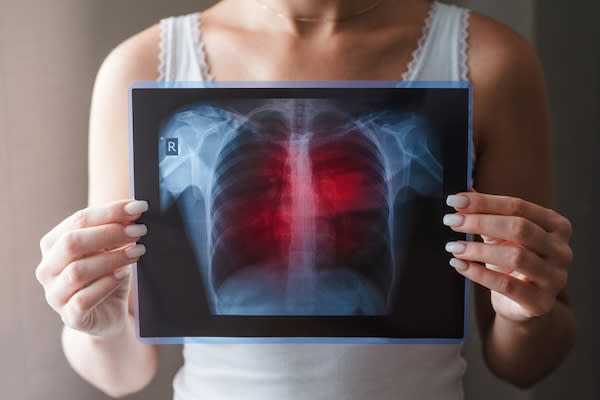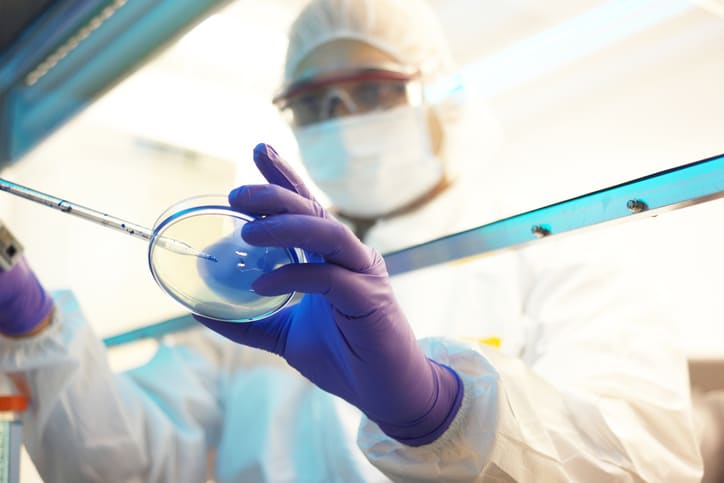Robotic Hysterectomy, Bilateral Salpingo-Oophorectomy (BSO), and Sentinel Lymph Node Dissection
A Less Invasive Approach to Gynecologic Cancer Treatment
When you're facing a gynecologic cancer diagnosis, surgery can feel daunting but knowing you’re in expert hands can make a difference. At the Providence Swedish Cancer Institute, our surgeons use advanced robotic techniques to remove the uterus, ovaries, fallopian tubes, and lymph nodes with precision — offering the potential for less pain and a faster recovery as you heal.

Treatment Overview
Robotic hysterectomy with bilateral salpingo-oophorectomy (BSO) and sentinel lymph node dissection is a minimally invasive surgery used to treat certain gynecologic cancers, including endometrial and early-stage cervical cancer. It may also be recommended if you’re at a higher risk of developing cancer.
During the procedure, your surgeon removes the uterus, cervix, ovaries, fallopian tubes, and nearby lymph nodes through small incisions. Using advanced robotic technology allows for greater precision and may lead to less pain, less blood loss, and a quicker recovery. Our gynecologic oncology team is highly experienced in robotic surgery and will work with you to create a care plan that supports your health, comfort, and peace of mind.
What to Expect
At the Providence Swedish Cancer Institute, we’ll guide you through each step of your robotic hysterectomy. From pre-surgical planning to recovery and follow-up care, our team offers expert treatment, compassionate support, and a personalized approach designed to help you heal and move forward with confidence.
About a week before surgery, we'll schedule a pre-admission visit to:
- Assist with any remaining pre-surgical lab work or tests
- Review what will happen during your surgery
- Explain potential side effects
- Discuss medications and post-surgery care, including in-home help or equipment if needed
You'll receive information to prepare for your hospital admission. If you have any questions after your pre-admission appointment, your nurse or care coordinator will be happy to help.
This procedure typically takes 3-4 hours, and most patients go home the same day or stay one night in the hospital. You may have mild to moderate pain, vaginal bleeding, bloating, or fatigue in the first few days. Because the procedure uses small incisions, healing is often quicker than with open surgery. Most people return to light activity in 1 to 2 weeks and resume normal routines by 4 to 6 weeks. Your care team will provide detailed instructions and ongoing support throughout your recovery.
Robotic-assisted surgery offers enhanced precision through small incisions, which can lead to less blood loss and pain, and a shorter hospital stay. Many patients can return to their normal routines more quickly than with traditional open surgery.
Removing the ovaries and fallopian tubes (BSO) may reduce the risk of future cancer, and sentinel lymph node dissection helps check for cancer spread while avoiding the removal of extra lymph nodes, which can lower the risk of side effects like lymphedema.
As with any surgery, there are risks, including:
- Infection
- Bleeding or blood clots
- Injury to nearby organs
- Pain or numbness at incision sites
- Changes in bladder or bowel function
- Menopausal symptoms if ovaries are removed
- Infertility
Your care team will talk with you about these risks, answer your questions, and help you make an informed decision that aligns with your goals.
You’ll have several follow-up appointments after your procedure for the first few weeks. This helps us monitor your healing and manage any complications. As time goes on, your appointments will be less frequent, but regular checkups are required so that we can continue to manage any of your ongoing treatment needs and watch for any signs of recurrence.
Services are also available to help you through every treatment stage.
Learn more about our supportive care services.
Frequently Asked Questions
Removing the ovaries and fallopian tubes – a procedure called bilateral salpingo-oophorectomy (BSO) – is often part of treating or preventing gynecologic cancers. In some cases, cancer may have already reached these areas; in others, removing them lowers the risk of cancer developing or spreading. If you have a genetic risk, such as a BRCA mutation, BSO may be recommended as a preventive step. Your care team will explain why this is part of your surgical plan and what it means for your long-term health.
Sentinel lymph node dissection helps us understand whether cancer has spread beyond the uterus or cervix. Instead of removing many lymph nodes, we remove and test just a few "sentinel" nodes – the ones most likely to show early signs of spread. If those are clear, you may not need further lymph node removal, which lowers the risk of complications like leg swelling or lymphedema. It’s a safe and effective way to guide your treatment while protecting your quality of life.
Most people recover from robotic hysterectomy within 4 to 6 weeks. Because the procedure is minimally invasive, many patients return to light activity after just a few days. However, it's normal to feel tired or sore as your body heals. You’ll need to avoid lifting heavy objects, having sex, or doing strenuous exercise for several weeks. Your care team will give you detailed recovery instructions, check in regularly, and help you safely ease back into your daily routines.
Robotic surgery is done through a few small incisions in your abdomen, usually no more than an inch long. These incisions are placed strategically to minimize visible scarring. While everyone heals differently, most scars fade over time and are less noticeable than those from traditional open surgery. Your team will give you guidance on how to care for your incisions and support proper healing.
If both ovaries are removed during surgery, you will go into menopause, regardless of your age or whether you had symptoms before. This can cause changes like hot flashes, mood shifts, sleep disturbances, or vaginal dryness. These symptoms can feel intense at first but often improve over time. Your care team will talk with you about what to expect and can offer support through medication, lifestyle changes, and referrals to specialists who can help you feel more comfortable.
It’s possible. After a hysterectomy, you may notice changes in sexual desire, arousal, or comfort, especially if you go into menopause with the removal of your ovaries. Some people experience vaginal dryness, decreased libido, or emotional shifts that affect intimacy. These changes are common and nothing to be embarrassed about. Your care team can connect you with resources like pelvic health specialists, hormone therapy, or counseling to help you feel more confident and supported.
Some gynecologic cancer treatments can impact fertility, depending on the type of cancer, its stage and your treatment plan. Surgeries involving the ovaries, uterus or fallopian tubes, as well as certain chemotherapy and radiation therapies, may affect your ability to conceive.
If preserving fertility is important to you, our team will discuss your options before treatment begins. We work closely with fertility specialists to explore fertility-sparing surgical techniques when appropriate. Your care team is here to support you in making decisions that match your goals and values.
We provide a full range of supportive care services to support you during and after your cancer treatment. Some of these services include:
- Art therapists
- Cancer rehabilitation (onco-physiatry)
- Care coordinators
- Genetic counseling (cancer geneticist)
- Health educators
- Medical massage (edema, lymphedema management)
- Music therapist
- Naturopaths
- Nutritionists
- Oncology nurses
- Social workers
- Speech and language pathology
We can also help with finances, food, transportation, and other challenges for eligible patients through our patient assistance fund.
See the full list of supportive care services.
Note: Some services are provided by local partners and vary based on location. Please contact your clinic for more information.
News & Info From Our Experts



